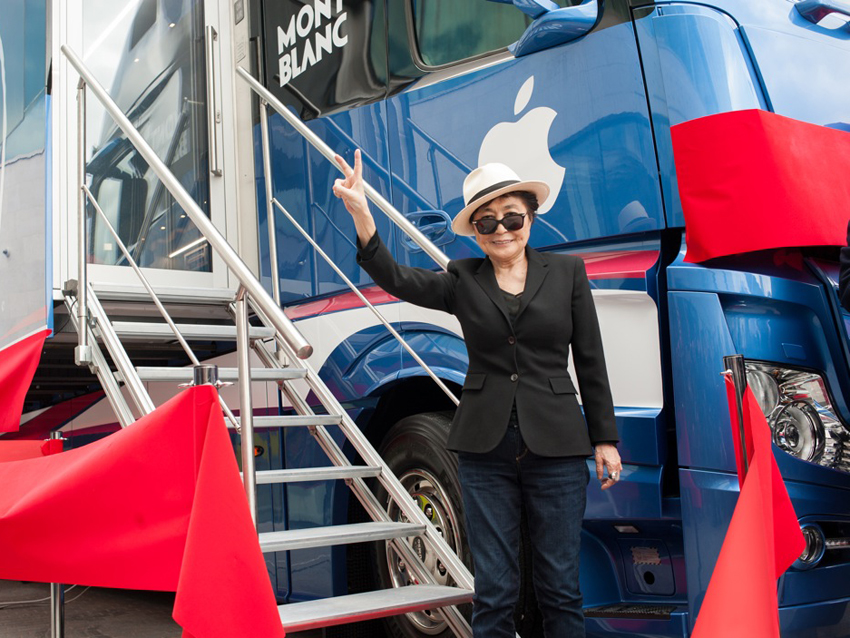
MusicRadar visits the John Lennon Educational Tour Bus
John Lennon was many things – musician, activist, walrus – but he was never the owner of a high-tech studio on wheels.
Since 1998, the John Lennon Educational Tour Bus, a sort of mobile dreamland for aspiring musicians, has been driving around America giving school kids a chance to make music. Spreading the very Lennon-ish ideals of inclusive music education and the benefits of unfettered creativity, it’s on a musical mission that has crisscrossed the United States.
But America wasn’t enough for Lennon Bus director Brian Rothschild. A brand new, state-of-the-art Lennon Bus has been launched in Europe, and MusicRadar hopped on board to find out what this project is all about and find out what gear they’re hauling round the continent in that big blue bus…
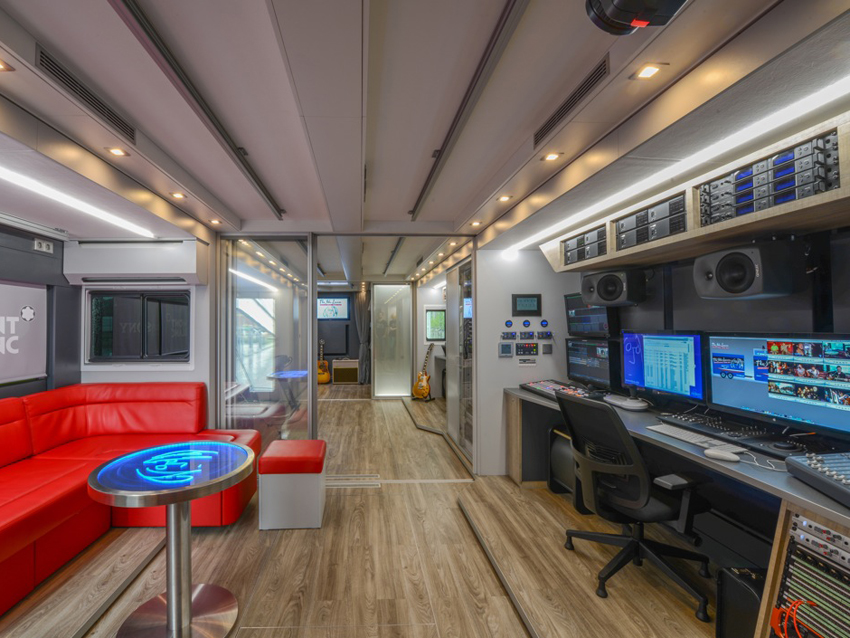
The European adventure
MusicRadar: Why was now the right time for Lennon Bus Europe?
Brian Rothschild: This is really the culmination of our first 16 years in the United States. The mission is really dedicated to providing young people with free hands-on opportunities to create original music, video, photo and digital media projects of all kinds. There’s a crew of three, they live on board. They are travelling to schools and colleges, universities, on tour with artists, festivals.
Wherever we go, we’re working usually with young people between the ages of 14 and 15 years old. They may be very experienced, or they may have no experience whatsoever. We’re not a facility that is looking for the next big star, although we have worked with some very talented students. It’s really meant to provide them with opportunities to see new career paths.
That being said, the core work has really been working with a group usually of 8 to 12 students on a given day. They come early in the morning and they’ll work with the engineers to come up with an idea for a song or a video. We have a session up front with the students to assess who they are, what their interests are, what kind of music they like. A big part of the process is about collaboration. Over the course of a single day, they’ll do everything from scratch.
So it demystifies the process?
In so many cases and for so many young people, they see the star that’s on stage, they see the finished product and they don’t realise there are so many people behind the scenes that are also involved in the creative endeavour, in the whole technical aspect of it.
The bus is modelled on the same layout at we have in America, but this is much, much bigger as it has pop outs on either side. It’s adaptable, so it can be one big open space, or can be set up as two 5.1 surround sound studios. All the products are provided by our partners and sponsors, so Apple computers, Gibson and Epiphone guitars, Sony cameras and Audio Technica microphones.
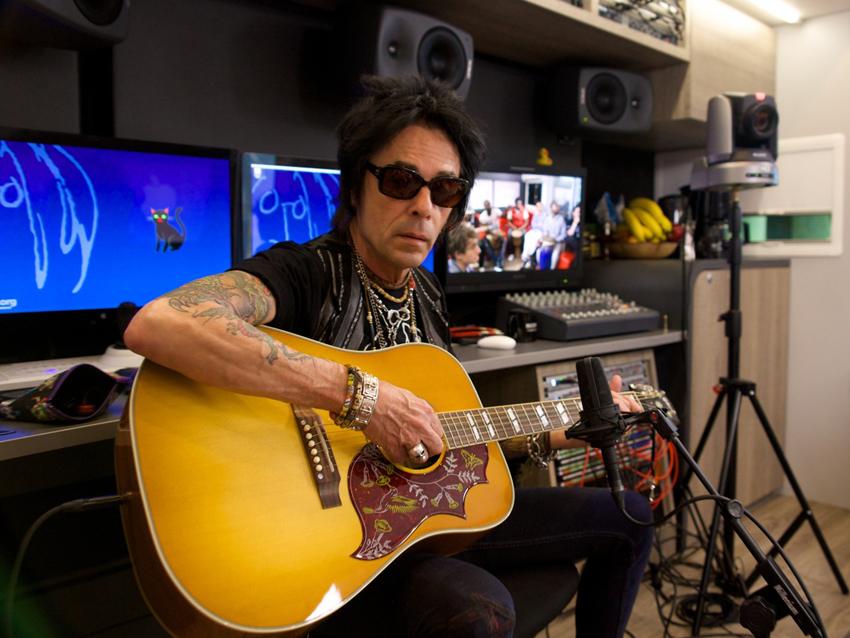
Sky tracks and guitars
How do you fit everything in to such a confined space?
We have a sky track system so you can attach lights, cameras, mics, and speakers, and it’s really cool. The need for this was based on our frustration in the States where everything was on stands and you’re constantly bumping in to stuff.
We wanted to create a system so that we could have separation and have a session going on up front and in the back, and besides the sound reduction we wanted visual reduction as well.
The brain of both studios is built around Mac pros. We also have a Newtek TriCaster, which provides all our ability for live streaming, but also for any kind of switching that we want to do. It’s pretty much the industry standard, a lot of TV productions are using them for sporting events and other productions, so they’ve become a significant partner.
What instruments do you have on board?
Obviously we have a full compliment of traditional musical instruments as well, built around a digital piano and V-Drums from Roland. We have more instruments in a trailer we pull round as well. When we have the space and the weather is appropriate, we have tents that we set up outside.
We have additional instruments in the trailer so we can get more people hands on, so we have a drum set, keyboards, guitars and all that – what I call the petting zoo experience. Lots of the time we’ll have people jamming in the tents.
We use the back room more for audio and the back for video, but you can do either in either. We have sets of switchable doors, and the crew sleeps in bunks at the back. The thing that’s really cool about that room is that it becomes an isolation booth, so we can use it for acoustic guitars or vocals. We can also close the doors for guitar isolation.
Then the final thing, the reason I’m really into this back room, is this material – it’s made by a company called Reflec Media, and in five seconds we can surround the whole room in this fabric. It has millions of reflective glass beads in it, and this becomes our green screen room.
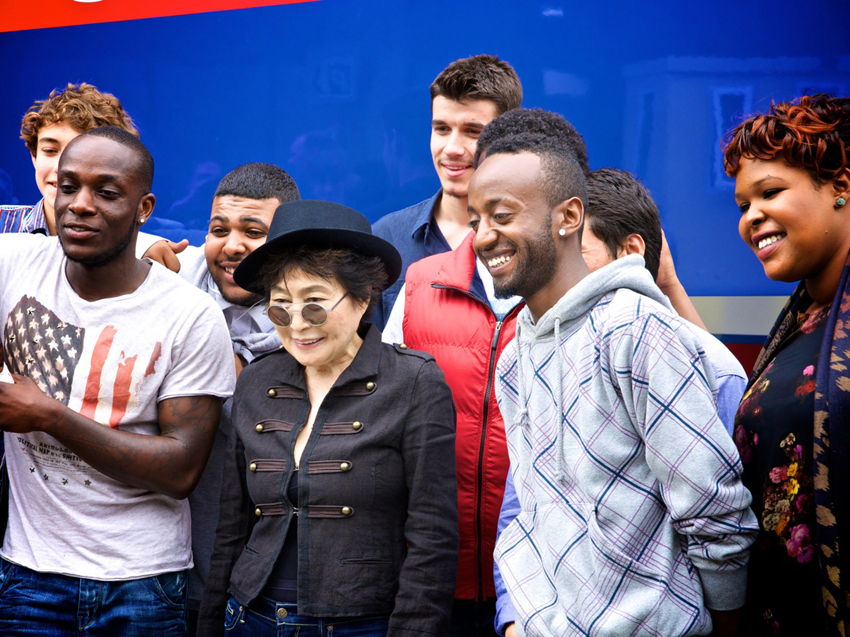
Building the bus
How did you build the bus – it’s more of a lorry than a conventional bus?
When I first started putting the idea together for Lennon Bus Europe, I was looking for a bus because that’s what we are in America. I went around to a lot of the manufacturers in Europe, and they were all enthusiastic but we’d get to a certain point and they couldn’t do it.
It’s a custom piece, so eventually I found this company names Ketterer that’s in Germany who had built luxury motor homes for the equine industry and formula one racing. They fell in love with idea of doing something unique like this. It’s based around a Mercedes Actros chassis, and then they built a custom box with pop outs on the side. That was our first objective, to get a lot of space, how much could we push it. Pretty far!
One of the advantages to a truck, when we made the decision, was that the vehicle has a flat roof, so we could put a deck up here. I couldn’t help myself, because it was again more space, and in the right setting it’s great. We built it with a port, so we have audio and video input and outputs here, so we can use it as another location for content production.
How involved has Yoko been?
We launched it on May 8 at the Museum Of Liverpool, and Yoko came on. She walked in, walked right to back and talked to me there. Then she saw the ladder, and she had to go up! I had only climbed it a couple of times, and I was a little nervous about it, and she said ‘Come on Brian,’ pushed in front of me like I was a wimp and climbed right up. She got up, looked up to the sky, and it was like a movie. It had been grey and rainy, but the sun came out and the sky was blue, and Yoko said “I feel closer to John up here.” It was so sweet.
Yoko was always super supportive of the idea, and that’s really just developed and become this kind of snowball. It’s something we see as of value in providing the young people with opportunities to get their voices heard and to collaborate, come together and create something from scratch. We all really believe that being involved in creative activities are the best way to combat violent activities, especially for young people, so that mission is a big part of why we do what we do. Yoko has been the major patron and support and sponsor, and then we have all these wonderful sponsors.
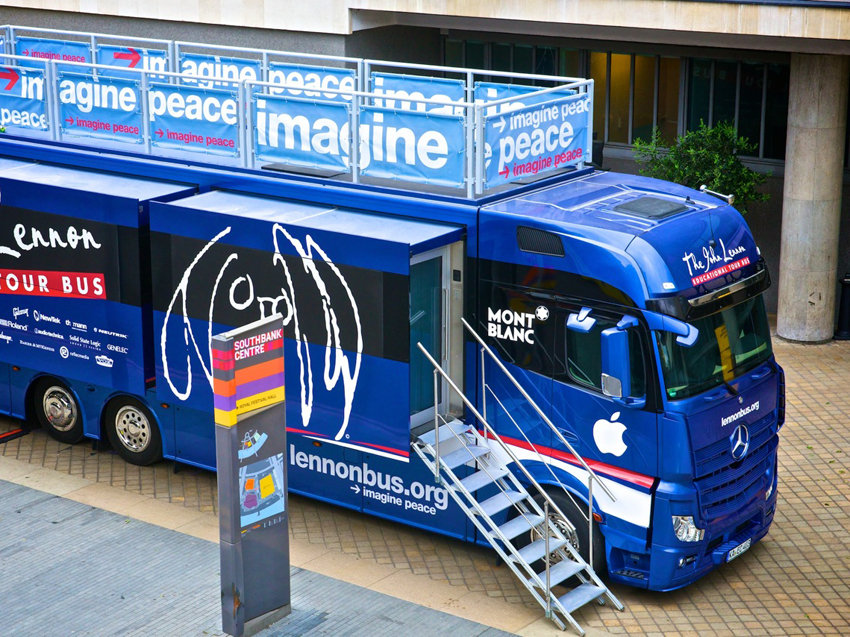
The Lennon connection
How did you get involved with the project?
We started in 1998, that was our first year with Lennon Bus America. We started with the John Lennon Songwriting Contest, which was an idea to give songwriters an opportunity to have their music heard. While I was getting that on its feet, I had the idea for a promotion that would be a recording shop on wheels, and we would let me people know about the contest and do some workshops on songwriting.
My background had been in music – I was into music technology, and was an artist myself for a little while in the ‘80s on Columbia Records, so I had the music background and I love the technology. By the time it got built and it showed up in New York, our first day was on Good Morning America. We had Joan Osborne and Wyclef Jean on board, and some students from New York City public schools. In the course of the two hours of the show, they wrote a song and then they presented the song in the last five minutes, so it was really the first session that we did that evolved in to what we do now.
We got invited all across the country, so there was obviously a good response. Then I couldn’t imagine taking it apart after a few months.
Driving around with the Lennon name on the bus must mean it's always popular?
Obviously it has John Lennon’s name on it, that’s really the driving inspiration for everything. His commitment to peace as an activist, his extraordinary abilities as a songwriter, as a communicator, so that’s really the commanding image behind it, but we’re not heavy handed with that. Sometimes people think we bring students on to do covers of John Lennon songs or to write songs that sound like the Beatles, but that couldn’t be further from the truth.
There are little touches of John – there are some items that Yoko provided, these are photos from their Nutopian press conference. They were holding up their hankies to surrender to piece, so that’s an original copy of their declaration of Nutopia and a copy of Mind Games.
If we were just the coolest recording studio on wheels, it would still be impressive, but to have John’s name on it and to have something that’s connected to his legacy really connects to people’s hearts and to positive values that you don’t often see actively communicated in the world.
For more information, visit the official John Lennon Educational Tour Bus website.









